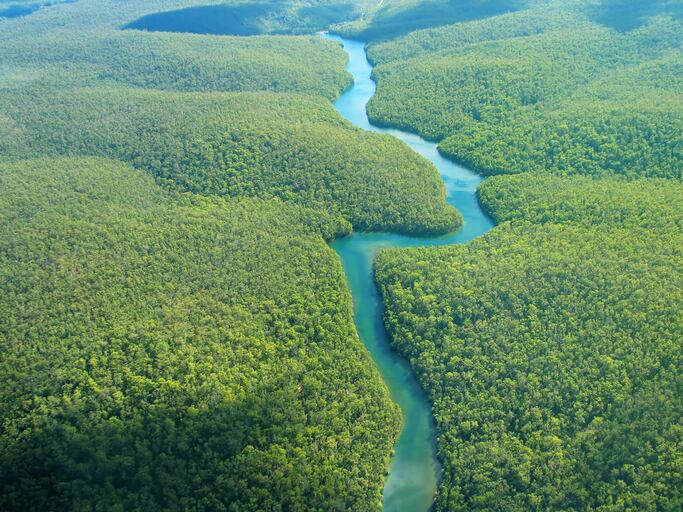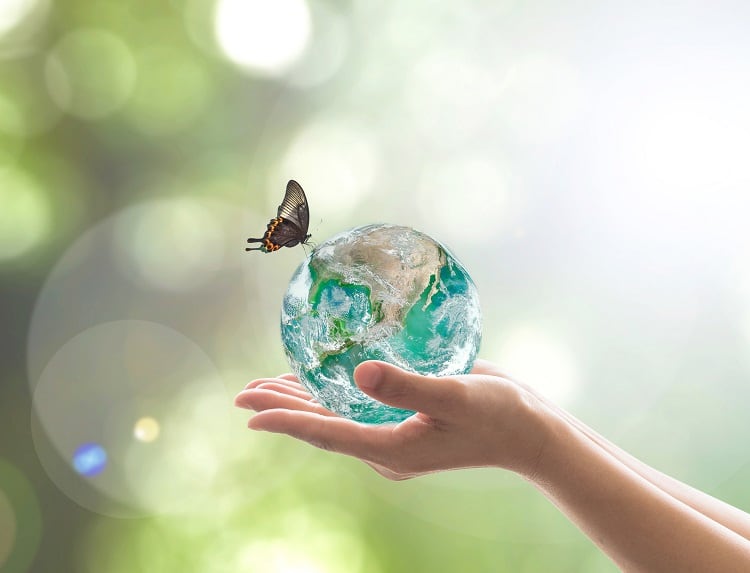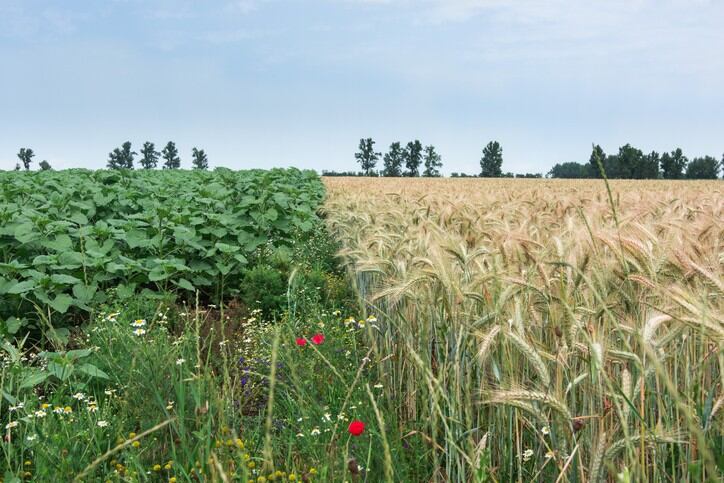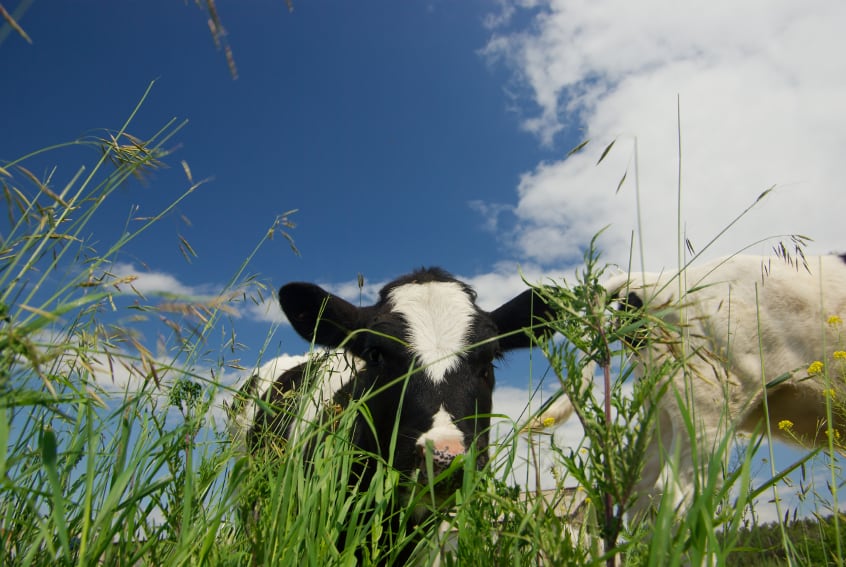Current agricultural practices, largely driven by consumer demand for animal products, are threatening what is left of the world’s biodiversity.
It is estimated that over one-third of the planet’s ice-free land surface is dedicated to food production, and going on recent trends, this figure is expected to grow.
Indeed, the last 300 years have seen approximately 50% of natural grasslands and one-third of natural forests converted for food production.
When agricultural expansion and intensification hit the South and Central American, African, and Asian tropics, the world’s most biodiverse ‘hotspot’ regions are affected.
The link is particularly strong between biodiversity loss and global meat consumption – whether it be due to livestock farming itself, or the associated soy production required to feed cattle and monogastric animals around the world.
Research connecting diet with sustainability make a strong case to consider the two together. Earlier this year, the EAT-Lancet Commission issued the world’s first scientific targets for a healthy diet inextricably linked to the health of the plant. And last week, the Intergovernmental Panel on Climate Change (IPCC) released a report linking diet to climate mitigation.
Yet associations between diet and biodiversity loss have yet to attract the same amount of attention, according to a team of researchers in Scotland and Germany.
“It is fair to say that over the past few years there has been less of a focus on biodiversity than there has been on climate,” Dr Peter Alexander from the University of Edinburgh’s global academy of agriculture and food security told FoodNavigator.
“So we are trying to address that gap, looking at the combination of dietary impacts on biodiversity loss.”
Diet, land use, and agricultural intensity change
The researchers employed a global food system model to project land use and agricultural intensity change until 2100, under three potential dietary scenarios impacted by income and population changes at a country level.
“From there, one is able to output land use in terms of where crops are grown and traded, from one country to another,” Alexander explained.
The three diets included: business-as-usual (BAU), a 95% reduction in ruminant product consumption (LOW-R), and a 95% reduction in animal product consumption (LOW-AP).
“We were then able to look at the consequences [of each diet] in terms of land use and the implications of those land use changes for biodiversity.”
The study also placed agricultural intensification – which is designed to increase yield and reduce the area of land needed for production – in the spotlight. Current practices have been linked to fertilizer and pesticide pollution, as can disrupt river flows when water is abstracted for irrigation.
So the research team also wanted to determine whether the intensity of production could be altered for more resource-efficient plant-based diets.

‘An important finding for biodiversity conservation’
The study found that under a BAU scenario, the most threatened region were in the tropics – due to both their high biodiversity profile and pressure from agricultural expansion.
Indeed, by 2100, the researchers predicted that BAU would be responsible for 9% loss of natural land around the world, 95% of which would be located in the tropics.
The LOW-R and LOW-AP scenarios, however, greatly reduced agricultural expansion in biodiverse ‘hotspots’ compared to BAU.
LOW-AP resulted in a 7% increase in natural land around the world by 2100, with lower losses across the tropics and increases in natural land across the northern hemisphere.
The researchers concluded that this potential for dietary global change to reduce global agricultural land area is an ‘important findings’ for biodiversity conservation.
“Perhaps unsurprisingly, we found that diets high in animal products have a negative impact on loss of natural vegetation in areas of high biodiversity, and a move towards a lower animal product and higher plant-based diet is associated with protecting those areas,” said Alexander.
Findings also linked plant-based diets to lower intensity of agricultural production, meaning that crops are farmed with fewer inputs. “This is likely to be beneficial to the environment as well,” the researcher continued.
“For a start, you can avoid having synthetic fertilizers products, which are energy-intensive, as well as [use fewer] pesticides – which have consequences for biodiversity close to agricultural land areas.”

While the IPCC report focused on climate mitigation, Alexander said these most recent findings tell a ‘very similar’ and complementary story.
“Both carry a similar message about the impact that agriculture and food production have on environmental sustainability, and that we can’t address these problems with a production focus only.
“Yes, we need to make the production more efficient. Yes, we need to reduce losses in the supply chain. But we also need to think about changes in consumer demand,” he told this publication.
“It’s not a case of doing any one of those three things, we need to do all three of them.”
A multifaceted and multisectoral approach
So now that strong ties between diet and biodiversity have been made, how can policymakers work to change consumer habits and conserve natural vegetation?
“There seem to be a number of ways that we can think about tackling these things,” suggested Alexander. By building awareness, increasing education, and offering more information regarding these connections, consumers – predominantly in developed countries – may voluntarily decide to change their behaviour and eating habits, he said.
Alternatively, governments could take a more regulatory approach through taxing and subsidising the externality associated with food production, the researcher continued. “They could subsidise the foods that are more beneficial considering the externalities of biodiversity, while taxing the foods that are more damaging. That would be expected to see some change in behaviour.”
And of course, local governments could regulate threatened areas to avoid land-use change and deforestation.
From an industry perspective, Alexander suggested that food and beverage manufacturers could offer more information regarding the production method and ingredient sourcing for each item. It is important they “relay in some way the contents of the products they are selling, what is in them, how that has been sourced, and the implications of such sourcing methods.”
Which for Alexander, comes back to voluntary behaviour change. “You can only make a behavioural change if you have the information. Perhaps regulation could play a part in that.”
Source: Global Environmental Change
The role of global dietary transitions for safeguarding biodiversity
Due to be published: September 2019
DOI: https://doi.org/10.1016/j.gloenvcha.2019.101956
Authors: Roslyn C. Henry, Peter Alexander, Sam Rabin, Peter Anthoni, Mark D.A. Rounsevell, Almut Arneth





